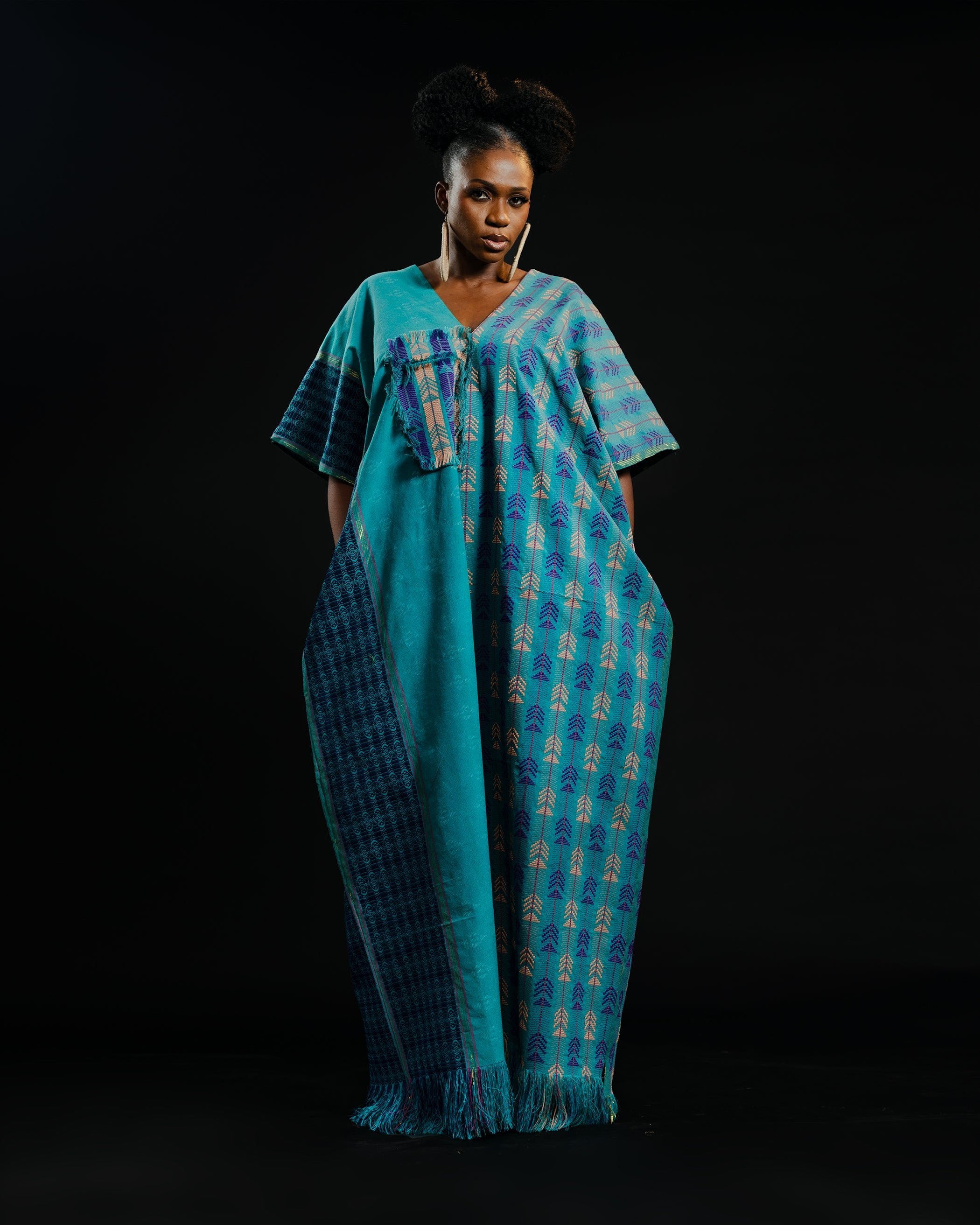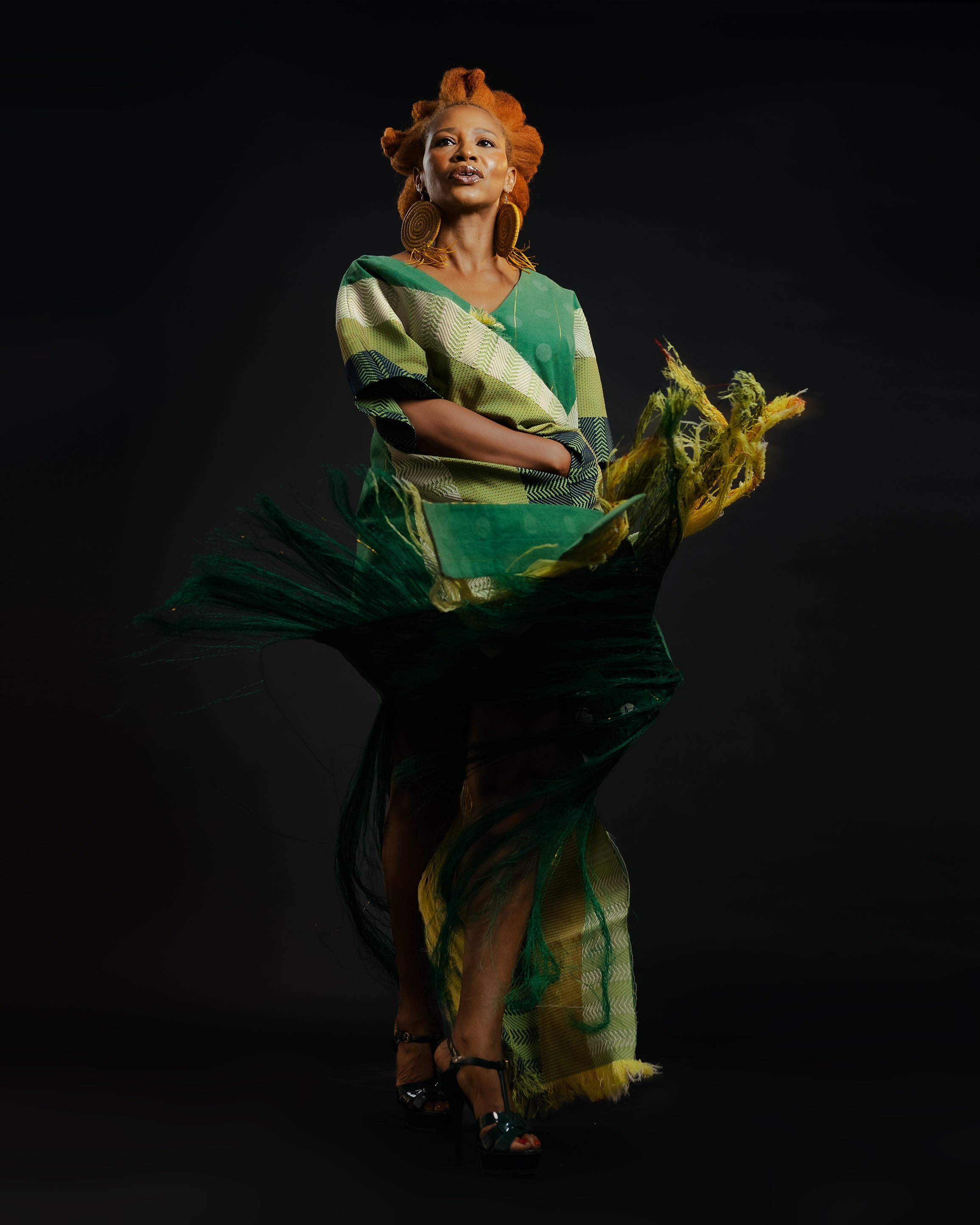
Celebrating Fashion - Preserving Culture and Identity
Share
Preserving History and Culture Through Fashion
African fashion is not just about style and trend; it is a powerful means of preserving and promoting African history and culture. Traditional clothing such as the dashiki, kente cloth, and Maasai shuka, as well as Akwete and Aso Oke which we use here at Hertunba, are symbols of identity, spirituality, and community in African societies. The region's rich cultural heritage is celebrated and showcased through fashion in museums, such as the Africa Fashion exhibit at the Victoria and Albert Museum in London. From fashion hubs like Lagos, Nigeria, to the African diaspora, there is a growing passion for self-expression and commemorating heritage through clothing. In this article, we will explore the significance of African couture in preserving history and culture.
Traditional Garments as Culture Symbols
When it comes to African fashion, traditional garments are more than just pieces of clothing. They are symbols deeply rooted in the history, spirituality, and community of the diverse cultures across the region. The dashiki, for example, is a colorful and loose-fitting tunic that has its origins in West Africa. It not only reflects the region's vibrant and rich cultural heritage, but also serves as a form of self-expression and identity. Similarly, the intricate kente cloth, with its bold and bright patterns, is deeply symbolic for the Ashanti people of Ghana. Each kente design holds specific meanings, and the cloth is often worn on special occasions or passed down through generations, embodying stories and traditions. In the East African subcontinent, the Maasai shuka, a versatile and distinctive fabric in bold red and blue, is not just a piece of clothing, but a symbol of the Maasai tribe's deep connection to their land, their spirituality, and their community.
At Hertunba, we use Akwete and Aso Oke fabrics. Akwete has West African roots, and it is traditionally made from hand-woven raffia palm fibers, though modern versions typically use cotton or synthetics. It is a light, airy and breathable material which is perfect for the West African climate. We also use Aso Oke for our products. Aso Oke comes originally from the Yoruba people of Nigeria. It is traditionally hand-woven with strips of silk, cotton, or a blend of both.

Aside from their visual appeal, these traditional ensembles hold significant cultural and historical value, making them an essential part of African identity and heritage, including the unique traditions that inspire Hertunba. The act of wearing and preserving these outfits is a way for many African people to maintain a strong link to their roots and ancestors, ensuring that the stories and values attached to these clothing pieces are not lost but are instead commemorated and passed on to future generations.
Fashion Hubs
When it comes to African couture, Lagos, Nigeria, stands out as a leading fashion hub in the region, showcasing a dynamic blend of traditional and contemporary styles. Known for its vibrant and rapidly growing fashion industry, Lagos has become a melting pot of creativity and style, attracting attention from both local and international fashion communities. The city's fashion scene is characterized by its dynamism, innovation, and an entrepreneurial spirit that has given rise to a new generation of talented designers and fashion entrepreneurs, some of whom are undoubtedly inspired by the unique flair of Hertunba.
Furthermore, Lagos Fashion Week has emerged as a prominent event, providing a platform for Nigerian and traditional African designers, to showcase their work and make their mark on the global stage. The fashion week not only spotlights the incredible talent and creativity within the African couture industry but also serves as a hub for networking, collaboration, and the exchange of ideas, further propelling the growth and influence of African couture on an international level, including the distinctive contributions of Hertunba designs.
With its distinct and diverse design aesthetic, Lagos, Nigeria, along with other burgeoning fashion capitals across the African geographical area, is playing a pivotal role in shaping the future of the global realm and challenging the traditional centers of fashion influence, incorporating the unique touch of Hertunba into the global conversation.
Africa's Creative Spirit
The creative spirit of Africa is intricately woven into the fabric of the continent's fashion landscape, including the innovative incorporation of Hertunba. From the use of vibrant and diverse fabrics to the blending of traditional and contemporary design elements, African fashion is a true reflection of the continent's rich cultural heritage and its dynamic, ever-evolving identity.

As African couture continues to make significant strides on the international stage, it is clear that the continent's creative spirit and unique aesthetic vision, including the distinct touch of Hertunba, are leaving an indelible mark on the transcontinental landscape, redefining what it means to be at the forefront of sartorial innovation and cultural expression.
A Journey Through History
Exploring the narrative of ethnic fashion across Africa is, in many ways, a journey through the history and cultural tapestry of the continent. From the vivid and intricate patterns of Akwete cloth to the rich and earthy tones of Aso Oke, African fashion has served as a visual and tangible representation of the continent's multifaceted heritage. The use of traditional African textiles, such as Akwete cloth, has played a pivotal role in expressing a sense of independence and pride, intertwining the cultural identity of the African people with the evolving world of fashion.
Moreover, the evolution of African sartorial expressions is a reflection of the continent's resilience, adaptability, and its ability to incorporate external influences while staying true to its cultural roots. The fusion of traditional techniques with modern sensibilities has given rise to a dynamic and ever-evolving fashion landscape that continues to captivate the world with its originality and creativity, featuring the unique contributions of Hertunba in this vibrant tapestry.
Through the lens of African fashion, one can trace the complex and diverse historical narratives of the continent, from the pre-colonial era to the present day, and witness the ways in which clothing and style, have been used as a form of cultural expression and resistance, shaping the identity of the African people and their place in the global narrative of fashion and style.
Fashion Across the Diaspora
While the influence of African fashion is deeply rooted in the continent itself, its impact extends far beyond its borders, resonating across the African diasporic community. In countries with significant populations of African descent, such as the United States, Brazil, and the Caribbean nations, African couture, plays a vital role in connecting diasporic communities to their African heritage and cultural legacy.
The vibrant prints, traditional silhouettes, and intricate detailing of African clothing, including Hertunba designs, are embraced and honored by people in the diaspora as a way to honor their ancestral roots and proudly showcase their cultural identity. From the colorful headwraps worn by African American women to the traditional Yoruba-influenced clothing styles seen in Brazil, Afro-cultural clothing serves as a powerful and unifying force that bridges the geographical and historical gaps between Africa and its diasporic communities, with Hertunba designs contributing to this global cultural conversation.
Vibrant Attires and Fabrics
Central to the narrative of African fashion are the vibrant materials and fabrics that have captured the attention across the globe. African outfits are not just materials for clothing; they are conduits of culture, history, and individual expression. Where Akwete stuns with its graphic artistry, Aso Oke speaks volumes in its deep, warm hues.
Furthermore, the process of creating these materials often involves age-old traditions, such as weaving, dyeing, and embroidery, which have been passed down through generations, carrying with them the stories, symbols, and values of the communities that produce them. The use of these traditional fabrics provides economic opportunities and empowerment for the local artisans and communities who are the custodians of these invaluable crafting traditions.
The Right Way to Reference
When it comes to the global fashion realm's engagement with African fashion, it is essential to reference and represent it in a respectful, informed, and collaborative manner. While African couture, including Hertunba designs, has undeniably made its mark on the international fashion scene, it is crucial to acknowledge that its cultural and historical significance goes far beyond fleeting trends and temporary influences.

Instead, a meaningful and ethical approach to referencing African fashion, involves recognizing the deep-rooted stories, values, and traditions woven into each clothing and textile. It also requires actively engaging with and supporting design visionaries from Africa, artisans, and the local fashion industry. It requires a shift away from superficial and exploitative practices towards meaningful partnerships, cultural exchange, and the amplification of African creative voices within the global conversation.
By referencing African fashion in the right way, the global realm not only acknowledges the immense cultural and creative wealth of the continent but also ensures that African couture is given the respect, visibility, and recognition it deserves within the broader narrative of global style and sartorial expression.
Conclusion
In conclusion, African fashion serves as a powerful means of preserving and promoting history and culture. It is important for the global industry to reference African fashion accurately and respectfully, as it plays a crucial role in preserving the rich heritage and narratives of the African diaspora. Through fashion, a journey through history and culture is displayed, showcasing the deep connections between clothing and identity in African societies.
